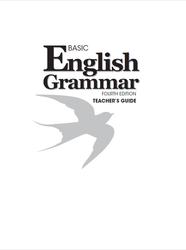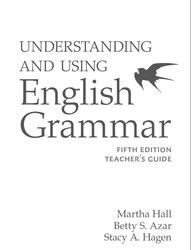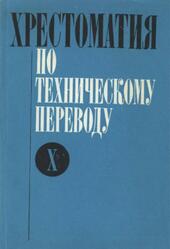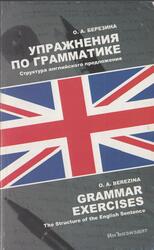Fundamentals of English Grammar is a high-intermediate to advanced level ESL/EFL developmental skills text. In the experience of many classroom teachers, language learners like to spend at least some time on grammar with a teacher to help them. The process of looking at and practicing grammar becomes a springboard for expanding the learners’ abilities in speaking, writing, listening, and reading.
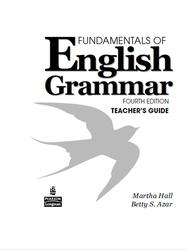
Past Time.
Common Irregular Verbs.
Students can feel overwhelmed when they look through Chart 2-4 and see the number of irregular verbs. There are over 250 irregular verbs in English, and many of these are high frequency. Chart 2-4 contains 100 common irregular verbs. (For a longer list that also includes less frequently used irregular verbs, consult Understanding and Using English Grammar.).
Students and teachers often wonder whether memorizing this list is helpful. The text provides ample practice opportunities, but it does seem beneficial to most EFL/ESL students to simply know these forms by memory. Most educated speakers of English can recite the principal parts of most irregular verbs (though many may stumble on some of the more troublesome or easily confused ones).
Contents.
PREFACE.
ACKNOWLEDGMENTS.
INTRODUCTION.
General Aims of Fundamentals of English Grammar.
Suggestions for the Classroom.
The Grammar Charts.
The Here-and-Now Classroom Context.
Demonstration Techniques.
Using the Board.
Explanations.
The Role of Terminology.
Balancing Teacher and Student Talk.
Exercise Types.
Warm-Up Exercises.
What Do I Already Know Exercises.
First Exercise after a Chart.
General Techniques for Fill-in (written) Exercises.
Open-Ended Exercises.
Paragraph Practice.
Error-Analysis Exercises.
Let’s Talk Exercises.
Pairwork Exercises.
Small Group Exercises.
Class Activity Exercises.
Discussion of Meaning Exercises.
Listening Exercises.
Pronunciation Exercises.
Expansions and Games.
Monitoring Errors.
In Written Work.
In Oral Work.
Optional Vocabulary.
Homework.
PowerPoints.
Additional Resources.
Using the Workbook.
Test Bank.
Azar Interactive.
Fun with Grammar.
AzarGrammar.com.
Notes on American vs. British English.
Differences in Grammar.
Differences in Spelling.
Differences in Vocabulary.
Key to Pronunciation Symbols.
The Phonetic Alphabet.
Consonants.
Vowels.
Chapter 1 PRESENT TIME.
1-1 Simple present and present progressive.
1-2 Forms of the simple present and the present progressive.
1-3 Frequency adverbs.
1-4 Singular/plural.
1-5 Spelling of final -s/-es.
1-6 Non-action verbs.
1-7 Present verbs: short answers to yes/no questions.
Chapter 2 PAST TIME.
2-1 Expressing past time: the simple past.
2-2 Spelling of -ing and -ed forms.
2-3 The principal parts of a verb.
2-4 Common irregular verbs: a reference list.
2-5 Regular verbs: pronunciation of -ed endings.
2-6 Simple past and past progressive.
2-7 Expressing past time: using time clauses.
2-8 Expressing past habit: used to.
Chapter 3 FUTURE TIME.
3-1 Expressing future time: be going to and will.
3-2 Forms with be going to.
3-3 Forms with will.
3-4 Certainty about the future.
3-5 Be going to vs. will.
3-6 Expressing the future in time clauses and if-clauses.
3-7 Using the present progressive to express future time.
3-8 Using the simple present to express future time.
3-9 Immediate future: using be about to.
3-10 Parallel verbs.
Chapter 4 PRESENT PERFECT AND THE PAST PERFECT.
4-1 Past participle.
4-2 Present perfect with since and for.
4-3 Negative, question, and short-answer forms.
4-4 Present perfect with unspecified time.
4-5 Simple past vs. present perfect.
4-6 Present perfect progressive.
4-7 Present perfect progressive vs. present perfect.
4-8 Past perfect.
Chapter 5 ASKING QUESTIONS.
5-1 Yes/no questions and short answers.
5-2 Yes/no questions and information questions.
5-3 Where, why, when, what time, how come, what. for.
5-4 Questions with who, who(m), and what.
5-5 Using what + a form of do.
5-6 Using which and what kind of.
5-7 Using whose.
5-8 Using how.
5-9 Using how often.
5-10 Using how far.
5-11 Length of time: it + take and how long.
5-12 Spoken and written contractions with question words.
5-13 More questions with how.
5-14 Using how about and what about.
5-15 Tag questions.
Chapter 6 NOUNS AND PRONOUNS.
6-1 Plural forms of nouns.
6-2 Pronunciation of final -s/-es.
6-3 Subjects, verbs, and objects.
6-4 Objects of prepositions.
6-5 Prepositions of time.
6-6 Word order: place and time.
6-7 Subject-verb agreement.
6-8 Using adjectives to describe nouns.
6-9 Using nouns as adjectives.
6-10 Personal pronouns: subjects and objects.
6-11 Possessive nouns.
6-12 Possessive pronouns and adjectives.
6-13 Reflexive pronouns.
6-14 Singular forms of other: another vs. the other.
6-15 Plural forms of other: other(s) vs. the other(s).
6-16 Summary of forms of other.
Chapter 7 MODAL AUXILIARIES.
7-1 The form of modal auxiliaries.
7-2 Expressing ability: can and could.
7-3 Expressing possibility: may, might, and maybe; Expressing permission: may and can.
7-4 Using could to express possibility.
7-5 Polite questions: may I, could I, can I.
7-6 Polite questions: would you, could you, will you, can you.
7-7 Expressing advice: should and ought to.
7-8 Expressing advice: had better.
7-9 Expressing necessity: have to, have got to, must.
7-10 Expressing lack of necessity: do not have to, Expressing prohibition: must not.
7-11 Making logical conclusions: must.
7-12 Tag questions with modal auxiliaries.
7-13 Giving instructions: imperative sentences.
7-14 Making suggestions: let’s and why don’t.
7-15 Stating preferences: prefer, like. better, would rather.
Chapter 8 CONNECTING IDEAS.
8-1 Connecting ideas with and.
8-2 Connecting ideas with but and or.
8-3 Connecting ideas with so.
8-4 Using auxiliary verbs after but.
8-5 Using and + too, so, either, neither.
8-6 Connecting ideas with because.
8-7 Connecting ideas with even though/although.
Chapter 9 COMPARISONS.
9-1 Making comparisons with as. as.
9-2 Comparative and superlative.
9-3 Comparative and superlative forms of adjectives and adverbs.
9-4 Completing a comparative.
9-5 Modifying comparatives.
9-6 Comparisons with less. than and not as... as.
9-7 Using more with nouns.
9-8 Repeating a comparative.
9-9 Using double comparatives.
9-10 Using superlatives.
9-11 Using the same, similar, different, like, alike.
Chapter 10 THE PASSIVE.
10-1 Active sentences and passive sentences.
10-2 Form of the passive.
10-3 Transitive and intransitive verbs.
10-4 Using the by-phrase.
10-5 Passive modal auxiliaries.
10-6 Using past participles as adjectives (non-progressive passive).
10-7 Participial adjectives: -ed vs... -ing.
10-8 Get + adjective; get + past participle.
10-9 Using be used/accustomed to and get used/accustomed to.
10-10 Used to vs. be used to.
10-11 Using be supposed to.
Chapter 11 COUNT/NONCOUNT NOUNS AND ARTICLES.
11-1 A vs. an.
11-2 Count and noncount nouns.
11-3 Noncount nouns.
11-4 More noncount nouns.
11-5 Using several, a lot of, many/much, and a few/a little.
11-6 Nouns that can be count or noncount.
11-7 Using units of measure with noncount nouns.
11-8 Guidelines for article usage.
11-9 Using the or Ø with names.
11-10 Capitalization.
Chapter 12 ADJECTIVE CLAUSES.
12-1 Adjective clauses: introduction.
12-2 Using who and whom in adjective clauses.
12-3 Using who, who(m), and that in adjective clauses.
12-4 Using which and that in adjective clauses.
12-5 Singular and plural verbs in adjective clauses.
12-6 Using prepositions in adjective clauses.
12-7 Using whose in adjective clauses.
Chapter 13 GERUNDS AND INFINITIVES.
13-1 Verb + gerund.
13-2 Go + -ing.
13-3 Verb + infinitive.
13-4 Verb + gerund or infinitive.
13-5 Preposition + gerund.
13-6 Using by and with to express how something is done.
13-7 Using gerunds as subjects; using it + infinitive.
13-8 It + infinitive: using for (someone).
13-9 Expressing purpose with in order to and for.
13-10 Using infinitives with too and enough.
Chapter 14 NOUN CLAUSES.
14-1 Noun clauses: introduction.
14-2 Noun clauses that begin with a question word.
14-3 Noun clauses that begin with if or whether.
14-4 Noun clauses that begin with that.
14-5 Other uses of that-clauses.
14-6 Substituting so for a that-clause in conversational responses.
14-7 Quoted speech.
14-8 Quoted speech vs. reported speech.
14-9 Verb forms in reported speech.
14-10 Common reporting verbs: tell, ask, answer/reply.
INDEX.
STUDENT BOOK ANSWER KEY.
Бесплатно скачать электронную книгу в удобном формате, смотреть и читать:
Скачать книгу Fundamentals of English Grammar, Fourth Edition, Teacher’s Guide, Hall M., Azar B.S., 2011 - fileskachat.com, быстрое и бесплатное скачивание.
Скачать pdf
Ниже можно купить эту книгу, если она есть в продаже, и похожие книги по лучшей цене со скидкой с доставкой по всей России.Купить книги
Скачать - pdf - Яндекс.Диск.
Дата публикации:
Теги: учебник по английскому языку :: английский язык :: Hall :: Azar
Смотрите также учебники, книги и учебные материалы:
Следующие учебники и книги:
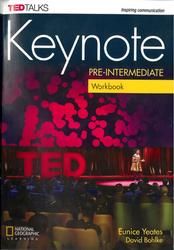 Keynote Pre Intermediate, Workbook, Yeates E., Bohlke D., 2017 — Фрагмент из книги. Without modem technology, Michael Chorost wouldn’t be able to hear a thing. Chorost became deaf in 2001, … Книги по английскому языку
Keynote Pre Intermediate, Workbook, Yeates E., Bohlke D., 2017 — Фрагмент из книги. Without modem technology, Michael Chorost wouldn’t be able to hear a thing. Chorost became deaf in 2001, … Книги по английскому языку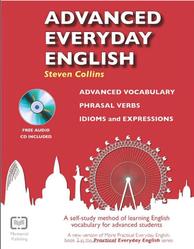 Advanced Everyday English, Collins S., 2011 — You will never find a better series of books to help you improve your English vocabulary. Advanced Everyday English is … Книги по английскому языку
Advanced Everyday English, Collins S., 2011 — You will never find a better series of books to help you improve your English vocabulary. Advanced Everyday English is … Книги по английскому языку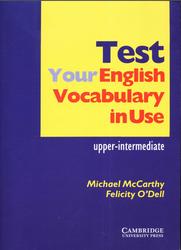 Test Your English Vocabulary In Use, Upper-Intermediate, McCarthy M., O Dell F., 2002 — Did you know that testing your English vocabulary could be enjoyable? You can use this book alone, or in class, … Книги по английскому языку
Test Your English Vocabulary In Use, Upper-Intermediate, McCarthy M., O Dell F., 2002 — Did you know that testing your English vocabulary could be enjoyable? You can use this book alone, or in class, … Книги по английскому языку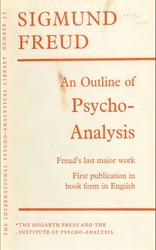 An Outline of Psycho-Analysis, Freud S., 1959 — An Outline of Psycho-Analysis is the last book which Sigmund Freud wrote before his death. A masterpiece of clarity and … Книги по английскому языку
An Outline of Psycho-Analysis, Freud S., 1959 — An Outline of Psycho-Analysis is the last book which Sigmund Freud wrote before his death. A masterpiece of clarity and … Книги по английскому языку
Предыдущие статьи:
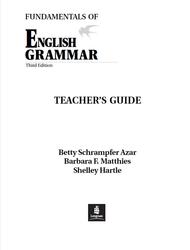 Fundamentals of English Grammar, Teacher’s Guide, Azar B.S., Matthies B.F., Hartle S., 2003 — The principal aims of Fundamentals of English Grammar are to present clear, cogent information about English grammar and usage, to … Книги по английскому языку
Fundamentals of English Grammar, Teacher’s Guide, Azar B.S., Matthies B.F., Hartle S., 2003 — The principal aims of Fundamentals of English Grammar are to present clear, cogent information about English grammar and usage, to … Книги по английскому языку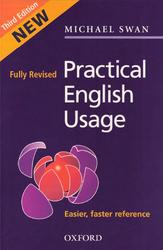 Practical English Usage, Swan M., 2005 — Practical English Usage is a guide to problems of this kind. It deals with over 600 points which regularly cause … Книги по английскому языку
Practical English Usage, Swan M., 2005 — Practical English Usage is a guide to problems of this kind. It deals with over 600 points which regularly cause … Книги по английскому языку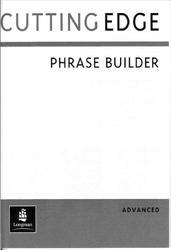 Cutting Edge Phrase Builder, Advanced — Фрагмент из книги. Assert yourself to behave in a determined way so that people do not force you to do … Книги по английскому языку
Cutting Edge Phrase Builder, Advanced — Фрагмент из книги. Assert yourself to behave in a determined way so that people do not force you to do … Книги по английскому языку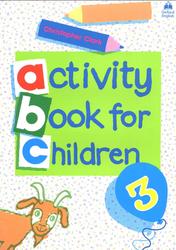 Activity Books for Children 3, Clark C., 1983 — Activity Books for Children are packed with engaging and creative tasks to help your pupils learn English. All the activities … Книги по английскому языку
Activity Books for Children 3, Clark C., 1983 — Activity Books for Children are packed with engaging and creative tasks to help your pupils learn English. All the activities … Книги по английскому языку

